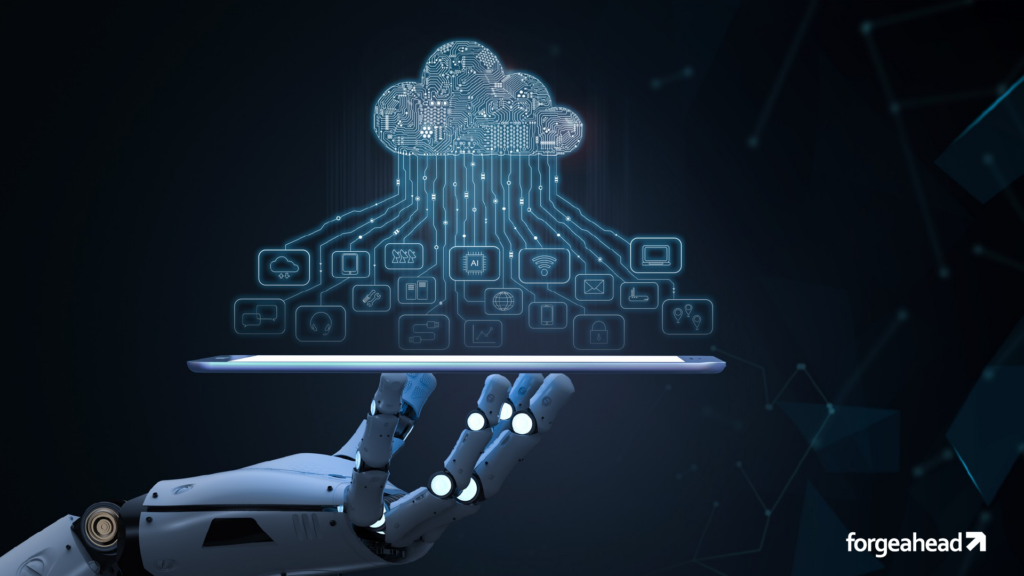Last updated on October 23rd, 2024
Imagine two IT teams are managing their company’s infrastructure.
Team A uses traditional monitoring tools and spends hours manually sifting through logs, trying to detect the root cause of issues. They’re caught in a cycle of reactive problem-solving, always a step behind as new issues pop up.
Meanwhile, Team B embraces AIOps. Armed with AI-driven insights, they quickly detect anomalies, predict potential issues before they escalate, and use automated responses to resolve incidents in real time.
Which team would you rather be on?
If you find your IT team stuck in the cycle of reactive problem-solving like Team A, it might be time to explore how AIOps can revolutionize your operations.
Read more to find out how.
Traditional Monitoring: Where It Falls Short
Traditional monitoring tools are based on manual, threshold-based monitoring methods. They rely on pre-defined rules to trigger alerts, which means IT teams only become aware of issues after they’ve already occurred.
This approach often leads to:
- Alert Overload: IT teams are bombarded with alerts, many of which are false positives. Sifting through this noise takes time and can delay responses to critical issues.
- Data Silos: Different tools monitor various parts of the infrastructure independently, resulting in fragmented data that makes it difficult to identify root causes.
- Manual Effort: Finding the root cause and fixing incidents require significant human intervention, which is not only time-consuming but also prone to human error.
Does your team often feel overwhelmed by endless alerts and manual troubleshooting?
Understanding AIOps (Artificial Intelligence) for IT Operations
Now, let’s take a look at Team B.
They use AIOps (Artificial Intelligence for IT Operations), which leverages AI and machine learning to automate data analysis, detect anomalies, and predict potential issues.
Here’s how AIOps changes the game:
- AI-Driven Data Analysis: AIOps collects data from multiple sources—logs, metrics, events—and analyzes it using AI to identify patterns, detect anomalies, and predict potential issues.
- Automation: Unlike traditional tools that rely on manual intervention, AIOps automates repetitive tasks, like ticket creation and incident assignment, freeing up IT teams to focus on strategic projects.
- Predictive Insights: AIOps doesn’t just react to problems; it predicts them. By recognizing patterns in system performance, it can alert teams to potential issues before they cause downtime.

Key Benefits Over Traditional Monitoring
- Proactive Problem-Solving: Predict and address issues before they impact users.
- Enhanced System Reliability: Reduce false positives and noise, allowing teams to focus on critical issues.
- Faster Incident Resolution: Streamline root cause analysis, reducing the Mean Time to Resolution (MTTR) by up to 50% in some cases.
Can you imagine how much time and resources your team could save by adopting a more proactive, AI-driven approach?
Comparing AIOps and Traditional Monitoring: A Side-by-Side Look
| Aspect | Traditional Monitoring | AIOps |
| Data Analysis | Manual, threshold-based monitoring | AI-driven, continuous real-time analysis |
| Incident Response | Reactive, manual troubleshooting | Proactive, automated responses |
| Alert Handling | Overwhelming noise, high false positives | Intelligent filtering, up to 80% noise reduction |
| Automation | Limited, requires manual intervention | Automated task handling and root cause analysis |
| Scalability | Struggles with large, complex environments | Easily adapts to complex, dynamic infrastructures |
Real-world Applications of AIOps
Use Cases:
- According to Nokia, AIOps solutions have boosted Customer Satisfaction (CX) scores for Communication Service Providers (CSPs) by 54% by automating various tasks using artificial intelligence (AI) and machine learning (ML).
- According to recent research, over 85% of IT leaders are exploring AI-powered IT solutions like AIOps to enhance operational efficiency and reduce downtimes
When to Transition from Traditional Monitoring to AIOps
Indicators for Change
- Your team is overwhelmed by the volume of alerts and false positives.
- Downtimes and outages are increasing, impacting customer satisfaction.
- Manual analysis is slowing down incident resolution and recovery.
Implementation Strategy
- Start Small: Begin by automating routine tasks to experience quick wins.
- Scale Gradually: Integrate AIOps into more complex areas of IT operations as your team becomes comfortable.
- Train Your Team: Upskill your IT staff on AI and machine learning concepts for a smoother transition.
Does your organization show signs that it’s time to move toward an AI-driven IT solution?
Future Outlook: AIOps as the Next Evolution in IT Operations
Emerging Technologies:
The future of AIOps is bright, with advancements in AI and machine learning leading to more sophisticated automation. Self-healing systems and intelligent resource management are becoming increasingly prevalent.
Long-term Benefits:
AIOps will continue to reshape IT operations, driving efficiency, reducing costs, and enhancing system reliability. Its integration with DevOps practices will lead to even more seamless IT operations management.
Parting Thoughts
The difference between AIOps and traditional monitoring is clear: while traditional tools offer reactive, manual solutions, AIOps provides proactive, AI-driven management that improves system reliability and reduces incident response times.
If your IT operations are bogged down by frequent alerts, lengthy resolutions, and manual processes, AIOps is the game-changer you need.
Ready to explore how AIOps can future-proof your IT operations? Contact Forgeahead today for a consultation and discover the transformative power of AIOps for your business.
—
FAQs:
1. What is the difference between AIOps and traditional IT monitoring?
AIOps uses AI and machine learning to analyze data in real-time, predict issues, and automate responses. Traditional IT monitoring relies on static thresholds and manual intervention, leading to reactive problem-solving.
2. How does AIOps improve incident management and system reliability?
AIOps quickly detects anomalies, automates incident responses, and provides predictive insights, reducing response times by up to 50% and improving overall system reliability.
3. What are the benefits of using AIOps over traditional monitoring?
AIOps offers proactive problem-solving, intelligent alert filtering, and automation of repetitive tasks, which reduces noise, accelerates issue resolution, and frees up IT teams for strategic work.
4. When should a business transition from traditional monitoring to AIOps?
Transition to AIOps if your team faces frequent downtimes, alert fatigue, and struggles with the complexity of scaling IT operations. AIOps provides more efficient, automated, and predictive management.
5. How does AIOps use AI to automate IT operations?
AIOps employs machine learning to identify patterns, predict potential failures, and automate tasks like ticket creation, incident prioritization, and root cause analysis, allowing for proactive IT management.



